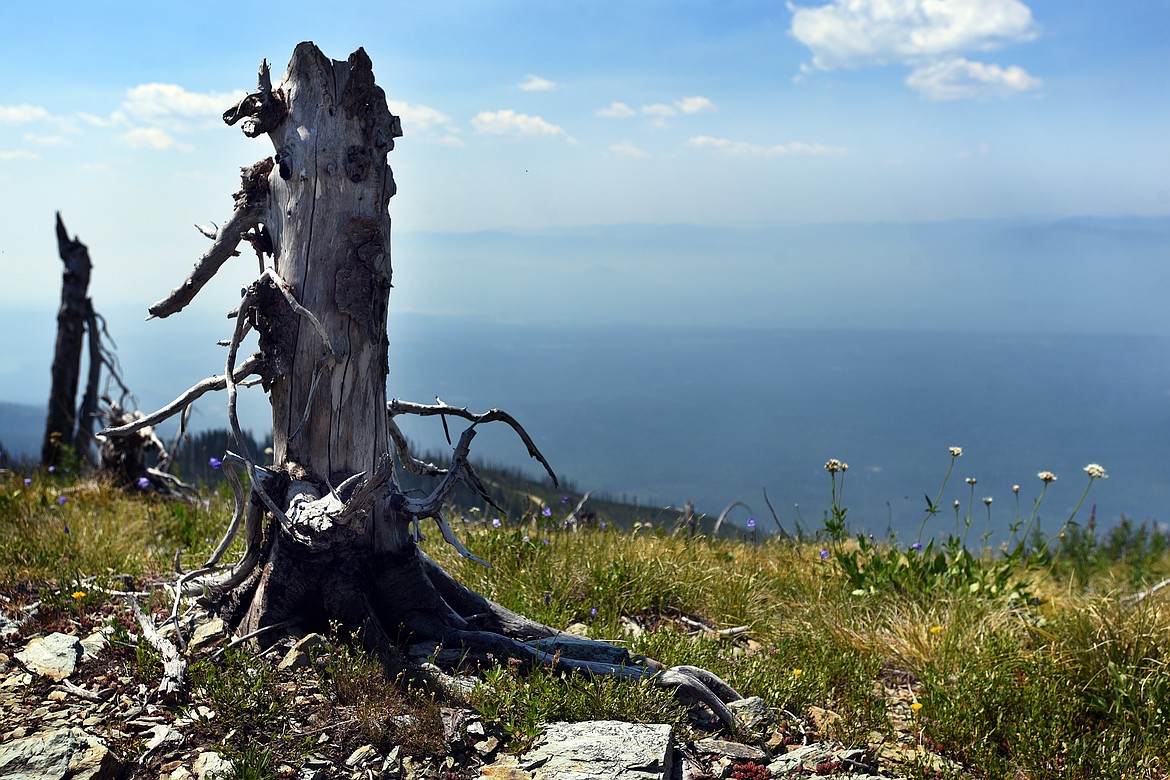Smoke fouls air as fires, heat hammer U.S. northern Rockies
BILLINGS (AP) — Record-breaking heat was forecast to return Tuesday to the U.S. northern Rockies, where thick smoke from dozens of large wildfires drove pollution readings to unhealthy levels.
Unhealthy air was recorded around most of Montana's larger cities — Billings, Butte, Bozeman and Missoula — and in portions of northern Wyoming and eastern Idaho, according data from U.S. government air monitoring stations.
More than 40 large fires were burning in the three states and smoke was also pouring in from blazes on the West Coast.
Dangerously hot conditions with temperatures as high as 110 degrees Fahrenheit (43 Celsius) were forecast in eastern Montana and northern Wyoming.
Billings and Sheridan, Wyoming, were expected to set record highs.
Across the U.S. West this summer, firefighters have confronted an unusually large number of wildfires early in the season as drought grips a region that's also warming due to climate change. That's making it harder to control and put out fires that have been blanketing much of the nation with smoke in recent days.
Residents of the Rocky Mountains are accustomed to some smoky days during summer, but this year's air quality turned bad earlier than usual and it has persisted.
A June heat wave that coincided with several major fires dried out forests and set up the landscape for more fires as the summer advances, said air quality specialist Benjamin Schmidt with the Missoula City-County Health Department.
Large fires sometimes burn into October. If that happens this year, Schmidt said, the Missoula area could experience its longest smoke season ever tallied, exacerbating public health impacts.
"If you have medium levels of smoke for two days, that's totally different from two months of smoke," he said. "Now you're starting to get headachy more easily and for people who have inflammation-type diseases, it affects the heart, respiratory system, everything."
The smoke could take a little edge off the heat if it gets thick enough to block out sufficient sunlight to keep temperatures down, Schmidt said. But that also can create conditions that prevent mixing between different layers of the atmosphere, allowing the smoke to linger.
The hot and dry conditions contributed to a fire southeast of Cascade in central Montana doubling in size overnight. The blaze in the Harris Mountain area has burned nearly 30 square miles (77 square kilometers), prompting an evacuation order for 60 homes.
More than 200 firefighters have responded to the fire that was started by lightning last week. They were among about 5,000 firefighters deployed across the Northern Rockies as of Tuesday.
Pollution levels were high enough over a 24-hour period that Montana officials issued an air quality alert and recommended people limit prolonged activity in Bozeman, Broadus and Hamilton.
Children, the elderly and people with heart disease or respiratory ailments are most at risk, state officials said.
An air quality alert also was issued for Lemhi County, Idaho.
Growing scientific research points to potential long-term health damage from breathing in microscopic particles of smoke.
N95 masks can protect against wildfire smoke but need to fit properly to be effective. When the smoke gets bad, health officials recommend keeping doors and windows closed, and running an air filter to clean inside air.
Associated Press writer Iris Samuels in Helena contributed to this report.


